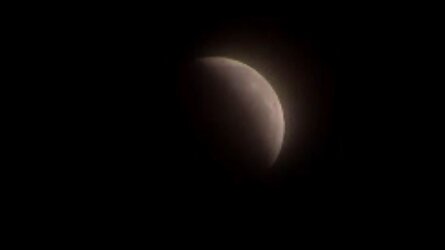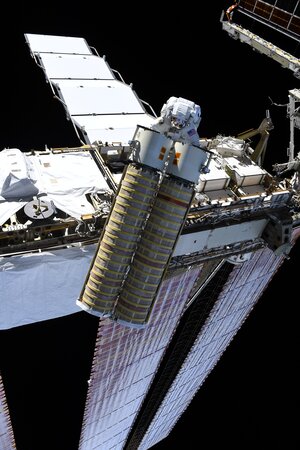Accept all cookies Accept only essential cookies See our Cookie Notice

About ESA
The European Space Agency (ESA) is Europe’s gateway to space. Its mission is to shape the development of Europe’s space capability and ensure that investment in space continues to deliver benefits to the citizens of Europe and the world.
Highlights
ESA - United space in Europe
This is ESA ESA facts Member States & Cooperating States Funding Director General Top management For Member State Delegations European vision European Space Policy ESA & EU Space Councils Responsibility & Sustainability Annual Report Calendar of meetings Corporate newsEstablishments & sites
ESA Headquarters ESA ESTEC ESA ESOC ESA ESRIN ESA EAC ESA ESAC Europe's Spaceport ESA ESEC ESA ECSAT Brussels Office Washington OfficeWorking with ESA
Business with ESA ESA Commercialisation Gateway Law at ESA Careers Cyber resilience at ESA IT at ESA Newsroom Partnerships Merchandising Licence Education Open Space Innovation Platform Integrity and Reporting Administrative Tribunal Health and SafetyMore about ESA
History ESA Historical Archives Exhibitions Publications Art & Culture ESA Merchandise Kids Diversity ESA Brand Centre ESA ChampionsLatest
Space in Member States
Find out more about space activities in our 23 Member States, and understand how ESA works together with their national agencies, institutions and organisations.
Science & Exploration
Exploring our Solar System and unlocking the secrets of the Universe
Go to topicAstronauts
Missions
Juice Euclid Webb Solar Orbiter BepiColombo Gaia ExoMars Cheops Exoplanet missions More missionsActivities
International Space Station Orion service module Gateway Concordia Caves & Pangaea BenefitsLatest
Space Safety
Protecting life and infrastructure on Earth and in orbit
Go to topicAsteroids
Asteroids and Planetary Defence Asteroid danger explained Flyeye telescope: asteroid detection Hera mission: asteroid deflection Near-Earth Object Coordination CentreSpace junk
About space debris Space debris by the numbers Space Environment Report In space refuelling, refurbishing and removingSafety from space
Clean Space ecodesign Zero Debris Technologies Space for Earth Supporting Sustainable DevelopmentLatest
Applications
Using space to benefit citizens and meet future challenges on Earth
Go to topicObserving the Earth
Observing the Earth Future EO Copernicus Meteorology Space for our climate Satellite missionsCommercialisation
ESA Commercialisation Gateway Open Space Innovation Platform Business Incubation ESA Space SolutionsLatest
Enabling & Support
Making space accessible and developing the technologies for the future
Go to topicBuilding missions
Space Engineering and Technology Test centre Laboratories Concurrent Design Facility Preparing for the future Shaping the Future Discovery and Preparation Advanced Concepts TeamSpace transportation
Space Transportation Ariane Vega Space Rider Future space transportation Boost! Europe's Spaceport Launches from Europe's Spaceport from 2012Latest

Lunch with the Moon
Thank you for liking
You have already liked this page, you can only like it once!
ESA astronaut Thomas Pesquet snapped this image of the Moon from the Russian segment on board the International Space Station earlier this month.
Currently on his first month of the six-month Alpha mission, Thomas is taking stunning photos of Earth and other wondrous objects when not working on science or Station maintenance.
“The blueish picture is when it was still low and the sky was not yet dark,” he notes. “It turned into its black and white self only moments later.”
Parts of North and South America, Australia and the Pacific will be treated to a lunar eclipse, which occurs when the Moon is engulfed by Earth’s shadow and the only sunlight that reaches its surface passes through our planet’s atmosphere, giving it a beautiful red-orange tint.
Today’s lunar eclipse will be the only total lunar eclipse of this year, and that same evening the Moon will be just 357 311 km away, often called a ‘SuperMoon’.
Despite the first human visit more than 50 years ago, the Moon remains largely unexplored yet promises to help us understand the formation of our planet, how crucial chemicals like water, necessary for life, came to the Earth-Moon system, and how we could one day use resources on the Moon to enable human presence.
In the near future, ESA will go ‘forward to the Moon’ when the European Service Module powers NASA’s Orion mission into lunar orbit, and in the next decade, ESA will play a key role in the development of the Gateway, an orbiting science station that will support future human landings.
For now, ESA is bringing the lunar eclipse to Europe with real-time coverage of the total lunar eclipse starting at midday today, 26 May, on ESA Web TV.
The live programme begins at 11:30 CEST and runs over lunchtime in Europe and will provide commentary on this fantastic eclipse, with special guest astronomers, scientists, engineers and experts from Europe and Australia.
Watch a replay of the livestream here.
For more stunning images from space, follow Thomas Pesquet during Mission Alpha here.
-
CREDIT
ESA/NASA–T. Pesquet -
LICENCE
ESA Standard Licence

Lunch with the Moon

Lunar eclipse over Lake Maggiore

Lunar eclipse

Peek-a-boo Moon















 Germany
Germany
 Austria
Austria
 Belgium
Belgium
 Denmark
Denmark
 Spain
Spain
 Estonia
Estonia
 Finland
Finland
 France
France
 Greece
Greece
 Hungary
Hungary
 Ireland
Ireland
 Italy
Italy
 Luxembourg
Luxembourg
 Norway
Norway
 The Netherlands
The Netherlands
 Poland
Poland
 Portugal
Portugal
 Czechia
Czechia
 Romania
Romania
 United Kingdom
United Kingdom
 Slovenia
Slovenia
 Sweden
Sweden
 Switzerland
Switzerland

























